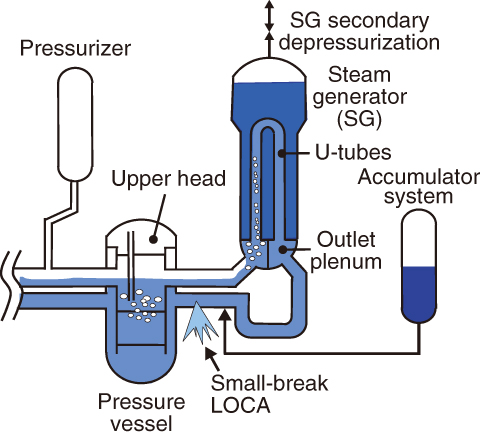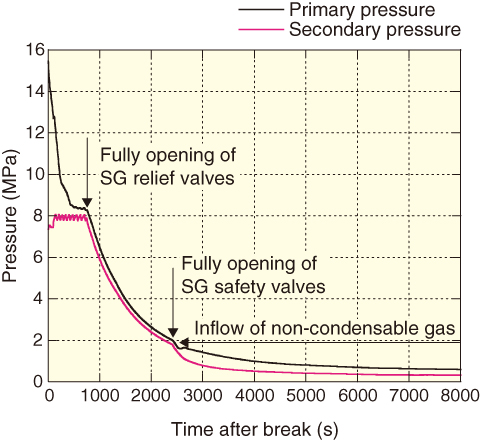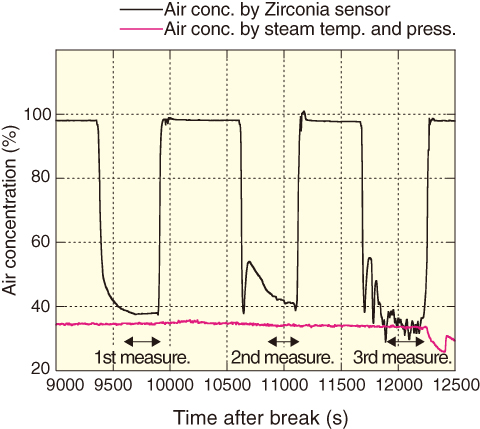
Fig.2-9 PWR small-break LOCA and accident-management measure

Fig.2-10 Primary and secondary pressures under non-condensable gas inflow

Fig.2-11 Air concentration at SG outlet plenum
Previous research at the large scale test facility (LSTF) simulated mainly small-break loss-of-coolant accidents (LOCAs) in PWR to clarify specific thermal-hydraulic phenomena and to confirm the effectiveness of accident management (AM) measure.
When the high-pressure injection system of an emergency core cooling system (ECCS) completely fails during a PWR small-break LOCA, core damage would occur due to the loss of the primary coolant and the delay of water injection into the core by the actuation of an ECCS, such as the accumulator (ACC) system. Steam generator (SG) secondary depressurization is an effective AM measure for core cooling because of the steam condensation in the SG U-tubes (Fig.2-9). When the isolation of ACC system is failed, ingress of non-condensable gas used for the pressurization of ACC tanks to the primary system may cause degradation in the primary depressurization after the completion of the ACC coolant injection. It is thus necessary to clarify how gas inflow influences the small-break LOCA progression with the SG secondary depressurization.
A Zirconia sensor has been employed for measuring oxygen concentration in engineering applications, such as exhaust gas for chimney. A gas-measurement device to directly measure oxygen concentration in steam-gas mixtures was developed using a Zirconia sensor under high-pressure condition (< 2 MPa), and a pressure control valve for the Zirconia sensor was installed up-stream of the sensor. The gas concentration could thus be measured at the SG outlet plenum and the upper head of the vessel, where non-condensable gas may have passed through.
We conducted a simulation test on a PWR horizontal leg small-break LOCA for the OECD/NEA ROSA Project at the LSTF. SG secondary depressurization as an AM action was initiated by fully opening the SG relief valves 10 min after the safety injection signal, considering a grace period to start an operator action. We further assumed that enhanced SG depressurization was conducted by fully opening the SG safety valves when the primary pressure decreased to 2 MPa. The primary pressure decreased following the secondary pressure after the start of the SG secondary depressurization, while the decreasing rate of the primary pressure became smaller than that of the secondary pressure after the non-condensable gas inflow (Fig.2-10). The gas concentration was analyzed through the measurements at the SG outlet plenum (Fig.2-11) and the upper head of the vessel. The results of the analysis confirmed that non-condensable gas from the ACC tanks accumulates in the U-tubes and in the outlet plenum of the SG.
Detailed experimental data obtained from the LSTF simulations were useful for the validation and verification of thermal-hydraulic best-estimate computer codes of the ROSA Project organizations, such as nuclear regulatory agencies.